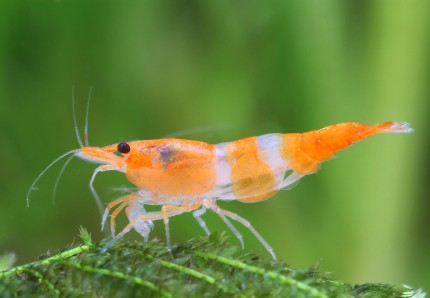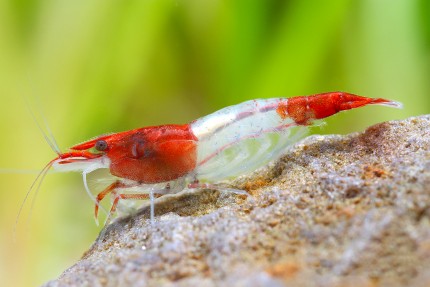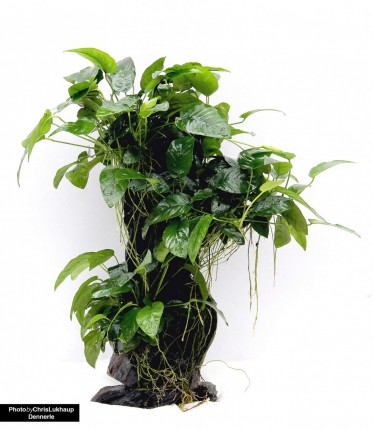Rili shrimp - colorful neocaridinas
What are Rili shrimp?
A few years ago a new pattern form of Neocaridina davidi (formerly Neocaridina heteropoda) appeared: the Rili variety. These shrimp have areas of relatively high color density as well as transparent areas. Usually the head and tail are colored, and the center of the body is transparent. However, the transparent areas can vary in size; for example, some rilis have only one colored rostrum.
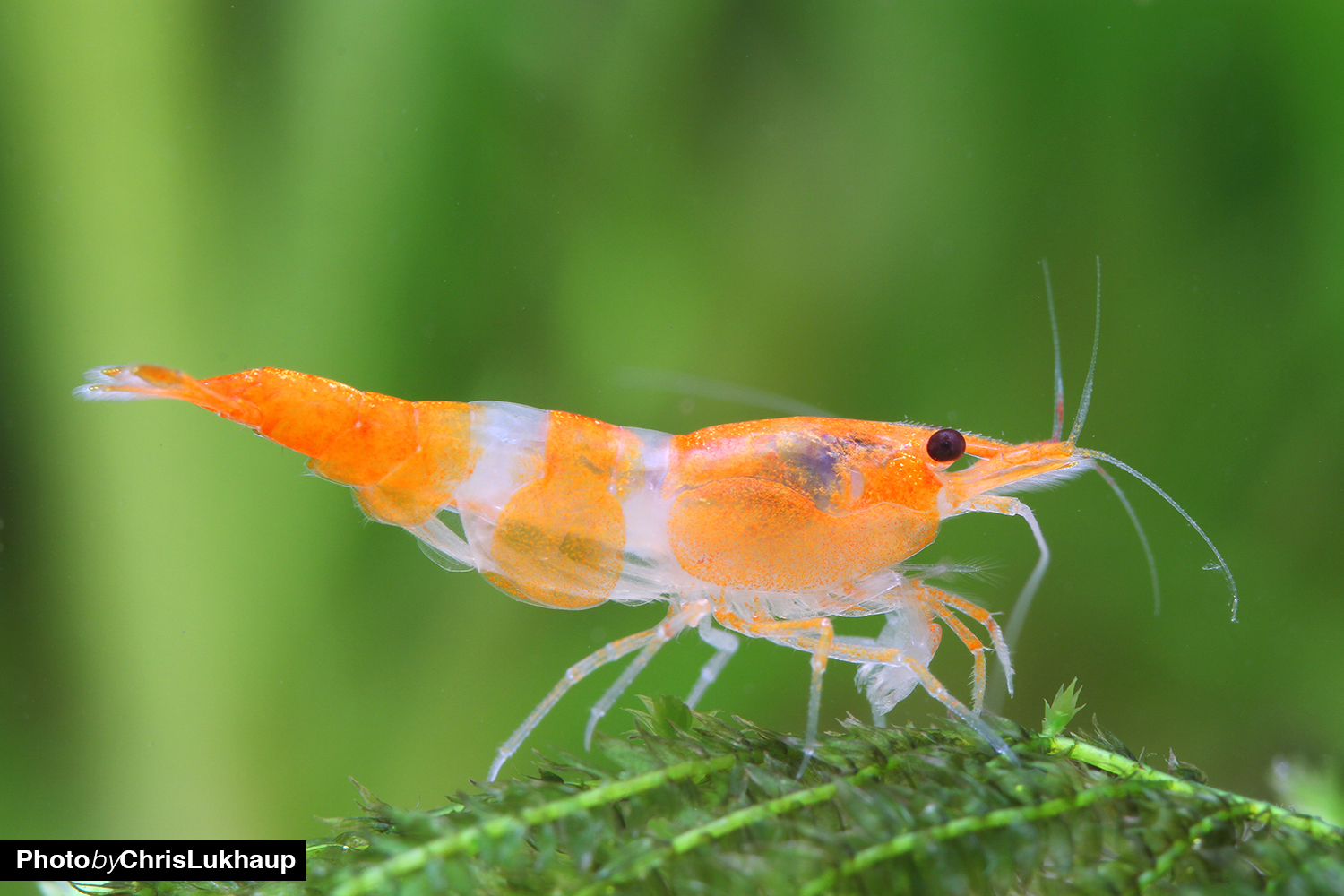 The Orange Rili shrimp is one of the rarer Rili breeding forms.
The Orange Rili shrimp is one of the rarer Rili breeding forms.
Color variety of the Rili shrimp - Neocaridina davidi
Among the redRili there are not only shrimp with a transparent body center, but also animals with bluish shimmering flesh, which are then not red-transparent, but just red-bluish. They are also called Blue Rili, although their basic color is actually red. From this variant the Blue Jelly was bred out, with which still sometimes on the otherwise totally transparent, but bluish body a few red spots, preferably at the Rostrum (the "nose" of the shrimps) are to be seen.
The Blue Jelly, the Blue Rili, the Red Rili and the very red variants Red Fire, Red Sakura and Red Cherry can therefore be kept together in one aquarium without problems, without the brown mixed form coming out. But there are also other colors with the Rili form, it is especially common with black Neocaridina davidi - the so-called Carbon Rilis. But also from Yellow Fire and Orange Sakura or Chocolate Sakura there are Rili forms from time to time. They can be socialized with the respective color stroke without problems, with other colors together one risks again a high portion of wild-colored animals, on the other hand in such a way again exciting new color strokes come to existence.
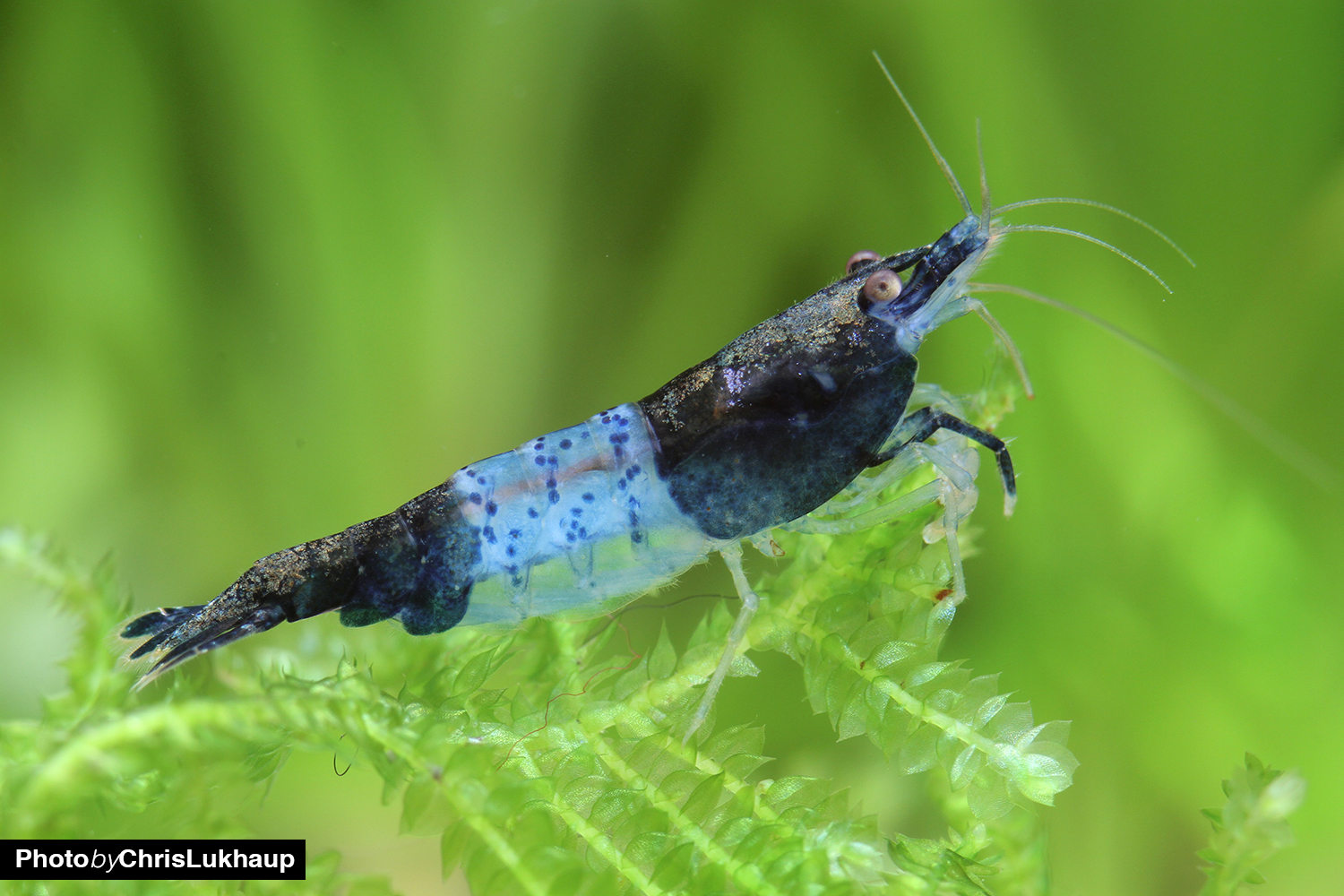 The Carbon Rili Shrimp is internationally known as Black Rili Shrimp.
The Carbon Rili Shrimp is internationally known as Black Rili Shrimp.
Keeping conditions of Rili Shrimp
Rili Shrimp can be kept from 20 l aquarium volume. They are therefore excellent inhabitants for nano aquariums. Their strong reproductive tendency makes a stock reduction necessary from time to time. A starting stocking of 10 to 20 animals has proven itself.
Water values Rili shrimps
Like all shrimps of the genus Neocaridina, Rili shrimps are rather robust. They tolerate a wide range of different water values. Well tolerated are pH values of 6.5 to 8.5, a total hardness (GH) of 6 to 30 °dH and a carbonate hardness (KH) of 3 to 30 °dH. Nevertheless, care should be taken that the water values do not fluctuate too much within themselves.
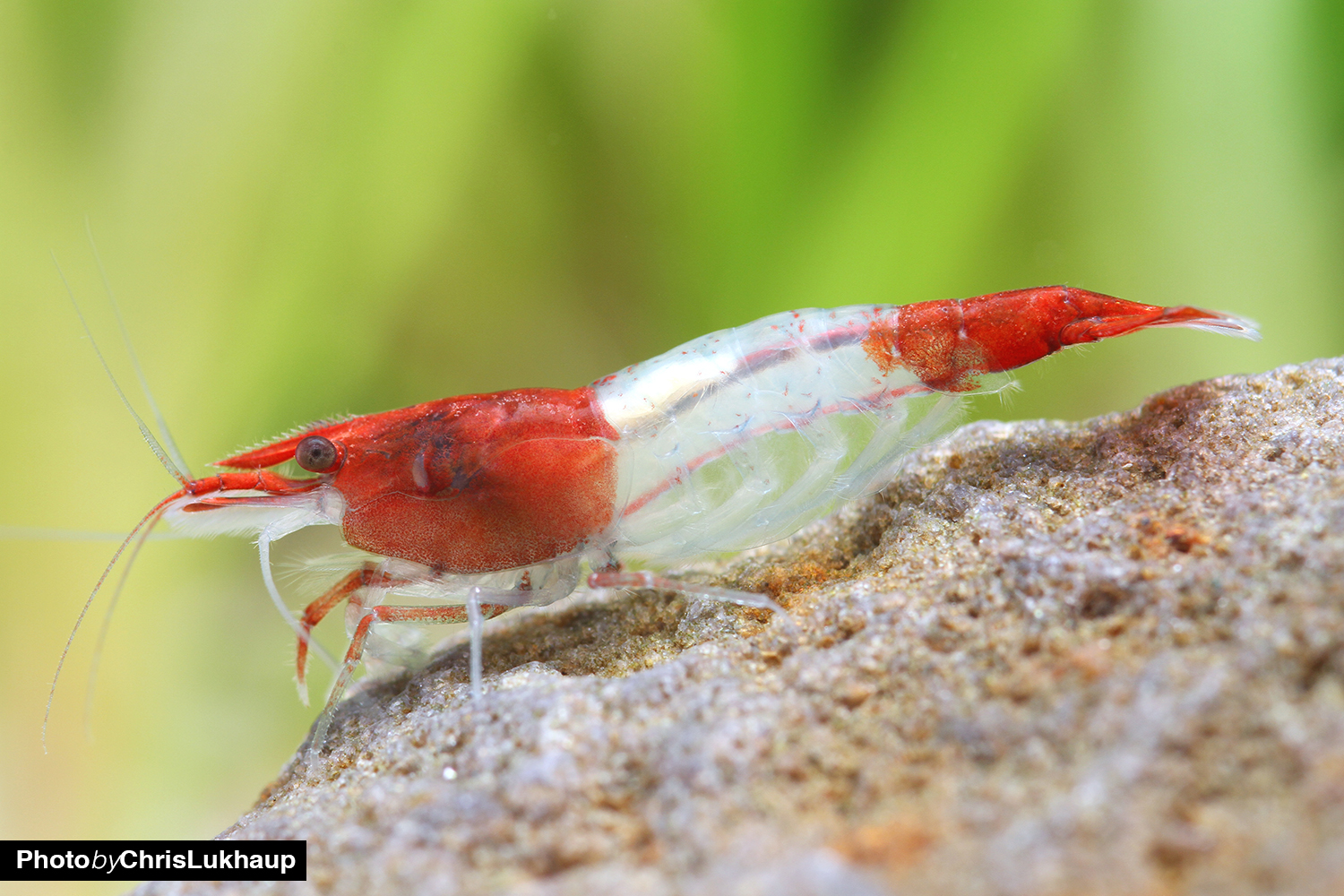 The Red Rili shrimp is the first known Rili shrimp breed, from it the Blue Jelly shrimp was "selected".
The Red Rili shrimp is the first known Rili shrimp breed, from it the Blue Jelly shrimp was "selected".
Neocaridina davidi - Robust beginner shrimp
In nature these shrimps often live in stagnant, very nutrient-rich waters, therefore a nitrate value of up to approx. 35 mg/l is no problem for them, and even small amounts of nitrite are tolerated. If water temperatures rise above 25 °C, care should be taken to ensure that there is sufficient oxygen in the tank. This can be done with an oxidizer ( Oxydatoren Blog ), an aerator or a diffuser on the filter.
Heat the Rili shrimp aquarium?
Since Neocaridina davidi are found in nature mainly in temperate and subtropical regions, they have no problems with low temperatures. An aquarium heater is therefore not necessary in a Neocardina aquarium. You can even keep them in a garden pond, provided you make sure that no animals can escape into the wild.
 In this Blue Dream shrimp you can see nicely how a slight transparent coloration has occurred, from such shrimp today's Rili shrimp were bred out.
In this Blue Dream shrimp you can see nicely how a slight transparent coloration has occurred, from such shrimp today's Rili shrimp were bred out.
Breeding of Rili shrimp?
If the external circumstances are favorable and the animals are sexually mature and healthy, one can very quickly discover small egg balls under the abdomen of the females. The peaceful Rilis do not eat young animals, so you can let them grow up in the aquarium without any problems.
Socialization of Rilis
All Neocaridina species, including the Rilis, are well suited for socialization with not too large, not too curious and not too voracious fish, but also with fan shrimp, snails, mussels and large crustaceans. Dwarf crabs occasionally catch and eat shrimp, as do large-armed shrimp and most crab species.
Shrimp are especially happy in community tanks with numerous shrimp hiding places and fine fiddled plants and mosses. Shrimp will also find places to hide under brown fall foliage, plus the bacterial growth on the foliage, and later the foliage itself, is good groundbait. Otherwise, Rili shrimp will eat all commercially available shrimp foods, as well as nettle or dried green walnut foliage.
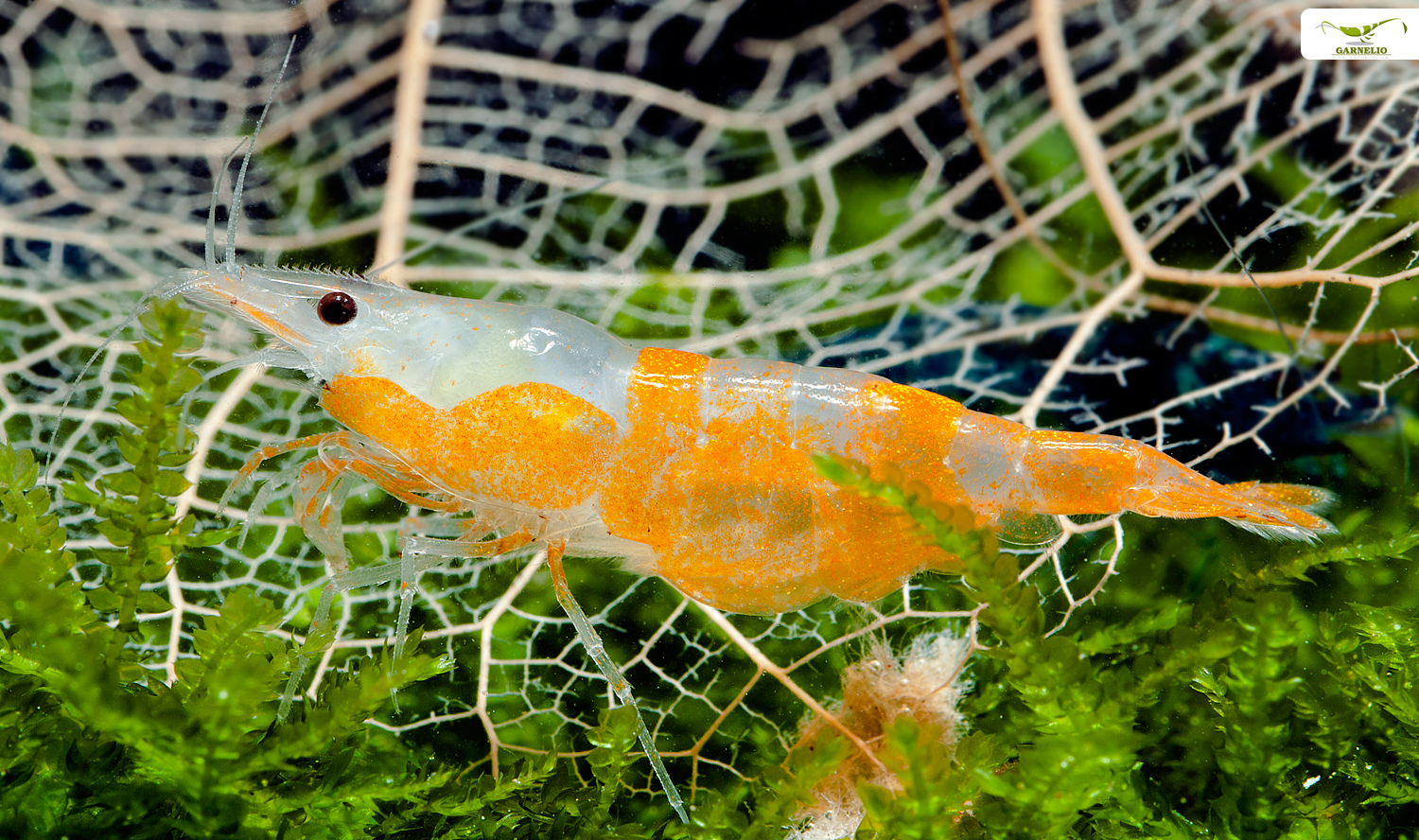 Orange Rili Shrimp are also known as Sunkist Rili Shrimp.
Orange Rili Shrimp are also known as Sunkist Rili Shrimp.
Setup and care of an aquarium for Rili shrimps
Plants stabilize water levels because they consume the breakdown products of organic waste from the water and produce oxygen. If between 60 and 80% of the bottom area in the shrimp aquarium is planted, this is optimal for the animals. Like all Neocaridina, the colorful Rilis do not need active soils, but do very well with neutral substrate such as shrimp gravel or natural gravel. The filter should be shrimp proof or if necessary made shrimp proof with a clean nylon sock. Even in filtered aquariums a weekly water change of about 30 to 40 % is recommended.
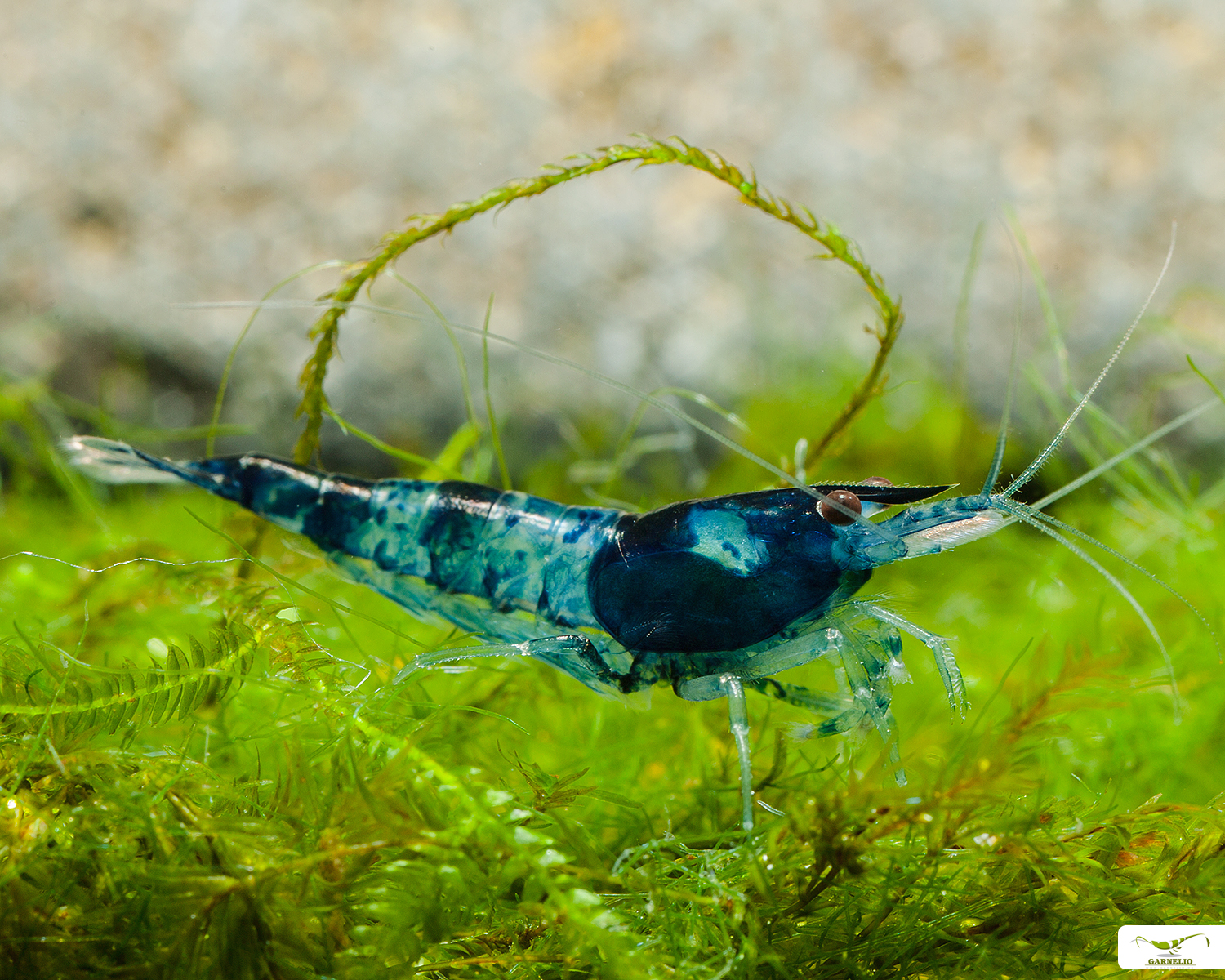 The Blue Black Rili shrimp is for many Rili lovers the most beautiful color form!
The Blue Black Rili shrimp is for many Rili lovers the most beautiful color form!

